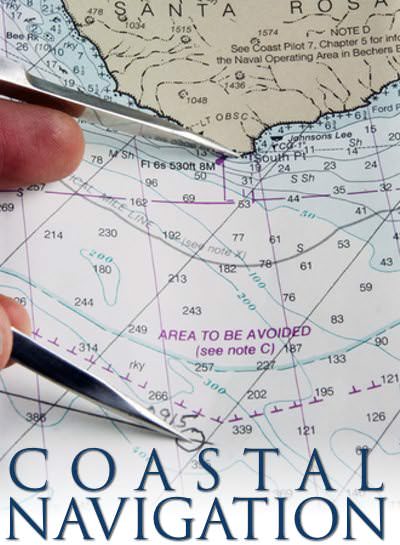
ASA 101, Keelboat Sailing 1
Able to skipper a sloop-rigged keelboat of approximately 20 to 27 feet in length by day in light to moderate winds (up to 15 knots) and sea conditions. Knowledge of basic sailing terminology, parts and functions, helm commands, basic sail trim, points of sail, buoyage, seamanship and safety including basic navigation rules to avoid collisions and hazards. Auxiliary power operation is not required.
| Recommendations | Before taking ASA 101 we recommend that you take our Online Intro To Sailing course. In this fun and interactive course, you will learn sailboat basics, including sailing terminology, commands used at the helm, and how the sails move the boat forward. |
|---|---|
| Study Materials | |
| Upon Completion | You will receive the official ASA Logbook signed by your instructor, an ASA 101 Certification Sticker, and a 90-day trial ASA Membership. |
Ready to get started?
FIND A SCHOOLASA 101, Keelboat Sailing 1 Standards
KNOWLEDGE
Basic Sailing Terminology
1. Describe and identify the following sailboat parts and their functions:
- Hull
- Deck
- Transom
- Keel
- Mast
- Boom
- Gooseneck
- Bow
- Stern
- Helm / Tiller /Wheel
- Rudder
- Cockpit
- Cabin
- Standing Rigging
- Shroud
- Spreader
- Chainplate
- Headstay / Forestay
- Backstay
- Stanchion
- Lifeline
- Pulpit
- Winch
- Cleat
- Block
- Fairlead
- Fender
- Docklines
2. Identify and describe the functions of the following sails, sail parts and sail controls:
- Mainsail
- Jib / Genoa
- Head
- Tack
- Clew
- Foot
- Luff
- Leech
- Downhaul / Cunningham
- Batten
- Batten Pocket
- Bolt Rope
- Hank
- Running Rigging
- Halyard
- Mainsheet
- Jibsheets
- Boom Topping Lift
- Boom Vang
- Telltale
- Outhaul
- Traveler
- Shackle
- Roller Furler
3. Define the following terms:
- Port
- Starboard
- Forward
- Aft
- Beam
- Ahead
- Astern
- Abeam
- Windward
- Leeward
- Draft
- Freeboard
- Heel
- Weather helm
- Skipper
- Helmsman
- Crew
Maneuvers & Points of Sail
4. Explain and identify using diagrams the following maneuvers, points of sail, and other terms:
- Head-to-Wind
- No-Sail Zone
- Closed Hauled
- Close Reach
- Beam Reach
- Broad Reach
- Run
- Sailing-by-the-Lee
- In Irons
- Luffing
- Port Tack
- Starboard Tack
- Tacking
- Jibing
- Stand-on
- Give-way
5. Explain and utilize correctly the following helm commands and crew responses:
- “Heading Up”
- “Bearing Away”
- “Ready About” —– “Ready” —– “Helms a-Lee” (or “Coming About” or “Tacking”)
- “Prepare to Jibe” —– “Ready” —– “Jibe-Ho” (or “Jibing”)
Navigation Rules
For items 6 through 12, describe, using diagrams as appropriate, the applicable rules for a 25-foot recreational sailing vessel, as found in the USCG Navigation Rules and Regulations Handbook. Identify the “stand-on” and “give-way” vessel in each situation.
6. Look-out, Rule 5.
7. Sailing vessels with the wind on different sides (starboard / port), Rule 12(a)(i)
8. Sailing vessels with the wind on same side (leeward / windward), Rule 12(a)(ii)
9. Sailing vessel on port tack cannot determine windward sailing vessel’s tack, Rule 12(a)(iii)
10. Overtaking (Rule 13)
11. Power-driven vessels approaching each other head-on (Rule 14)
12. Power-driven vessel with another power-driven vessel on starboard side (Rule 15)
13. Describe appropriate actions to be taken when sailing in the vicinity of commercial traffic, including responding to a danger signal.
Aids to Navigation
14. Identify and state the purpose of lateral aids to navigation by color, shape & numbering, including preferred channel markers.
15. Identify safe water, information and regulatory markers.
Safety Gear & Procedures
16. List the federally required equipment for a recreational sailboat of 25-feet in length.
17. Identify the location and color of navigation lights used by a recreational vessel of 25-feet in length.
18. Describe the purpose of a Float Plan, give examples of information contained therein and to whom it should be submitted.
19. Describe when and to whom boating accidents must be reported.
20. State the Federal Blood Alcohol Content (BAC) limit for vessel operation.
SKILLS
Safety Equipment
21. Demonstrate the proper use of a lifejacket or personal flotation device (PFD).
Sailing
A Certified Sailor has successfully demonstrated his or her ability to:
Rig/hoist/set sails safely and correctly to obtain proper sail trim using the following lines and controls, if available on the practice vessel
22. Halyards and/or furling devices
23. Downhaul or Cunningham
24. Outhaul
25. Boom Vang
26. Mainsheet
27. Jibsheets
28. Winches
29. Traveler
30. Lower/furl/stow sails and coil/flake/stow lines properly
Without coaching or assistance, verbalize appropriate commands and demonstrate competence, safety and good seamanship in the role of Skipper / Helmsman during the maneuvers listed in elements 31 – 42. Honor all aids to navigation and use properly the basic Navigation Rules. Ensure sails are trimmed correctly and the vessel is in control at all times.










